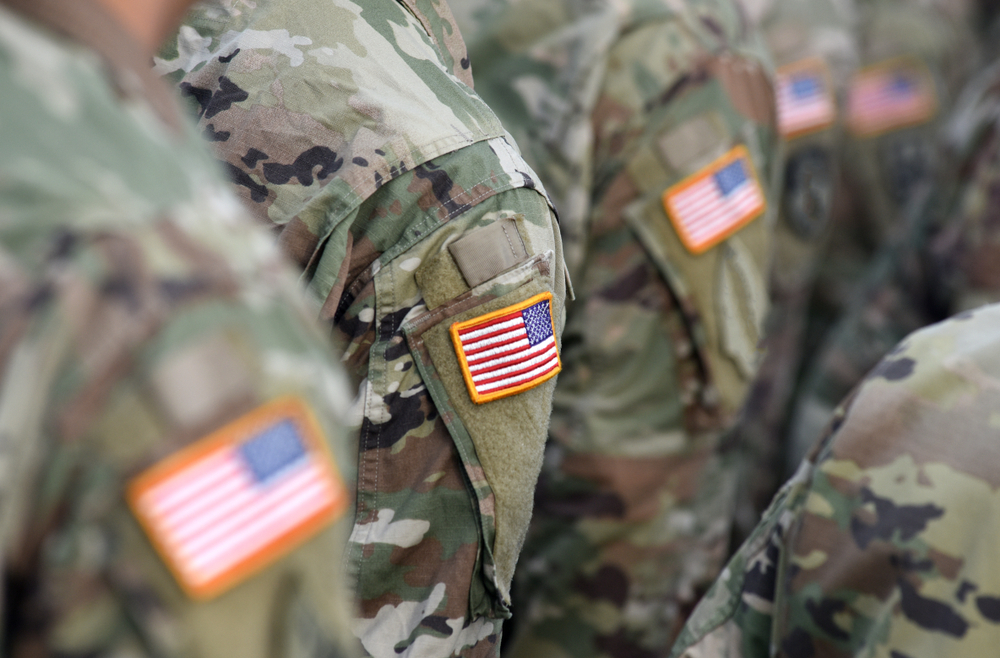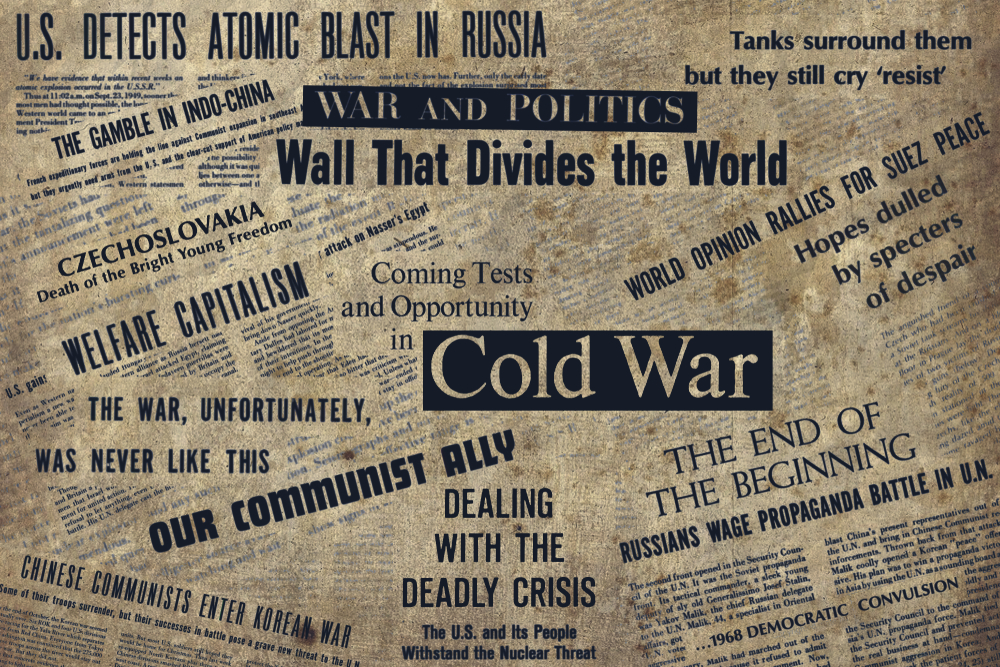The Cold War shaped modern America in ways that still echo through our politics, technology, military, and culture today. What began as a tense standoff between the U.S. and the Soviet Union turned into a decades-long influence on nearly every aspect of American life.
From the rise of suburbia and defense spending to space exploration and fears of communism, the Cold War wasn’t just a global conflict—it was a domestic transformation.
Understanding how the Cold War shaped modern America helps explain why we live the way we do today, from our foreign policy to the very structure of our economy.

Military expansion and the rise of the defense industry
One of the most immediate ways the Cold War shaped modern America was through its massive military buildup. After World War II, the U.S. didn’t demobilize as it had in earlier conflicts. Instead, it maintained a large standing military to counter the Soviet threat.
This decision led to the rise of the military-industrial complex, a term President Dwight D. Eisenhower famously warned about. Billions of dollars were funneled into defense contracts, supporting companies that developed advanced weapons, jets, and surveillance systems. Today, defense spending remains a significant portion of the U.S. budget, a legacy of Cold War priorities that still affects national policy.
The Cold War arms race also spurred massive technological advancements in aerospace, nuclear technology, and intelligence gathering. Agencies like the CIA and NSA grew rapidly, influencing how intelligence operations worked across the globe. Surveillance capabilities, once limited, became highly advanced, shaping the modern intelligence apparatus we rely on today.
The birth of the suburbs and a new way of life
The Cold War shaped modern America’s suburbs, too literally. Fears of nuclear attack drove many Americans out of cities and into newly built suburban communities. These neighborhoods offered the promise of safety, comfort, and a slice of the American Dream.
At the same time, the federal government invested in highways and housing loans, helping millions buy homes. The growth of suburbia reflected Cold War values: stability, patriotism, and a clear division from the “communist” way of life. This suburban boom redefined what it meant to be middle class in America.
Fear of communism and McCarthyism
Domestically, one of the most chilling effects of the Cold War was the Red Scare—a widespread fear that communists had infiltrated American institutions. Senator Joseph McCarthy led a campaign to expose alleged communist sympathizers in government, entertainment, and education.
This era of suspicion changed American politics and culture. People lost jobs, reputations were destroyed, and freedom of expression was under threat. While McCarthyism eventually faded, the fear it stirred up had a lasting impact. It hardened attitudes toward dissent and helped shape America’s ongoing debate about civil liberties and national security.
Space race and technological innovation
The Cold War shaped modern America’s technological landscape, especially through the Space Race. When the Soviet Union launched Sputnik in 1957, the U.S. responded by pouring money into science and engineering education. This led to the creation of NASA and a surge of innovation.
By 1969, the U.S. had landed a man on the moon—an achievement deeply rooted in Cold War competition. But beyond space, Cold War tech investment paved the way for computers, satellites, and the internet. Much of today’s digital world can trace its origins back to research driven by Cold War rivalry.
Foreign Policy and America’s global role
The Cold War transformed America from an isolationist nation into a global superpower with far-reaching influence. The U.S. committed itself to containing communism around the world, a policy that led to involvement in Korea, Vietnam, Latin America, and beyond.
This shift had a double effect. On one hand, it positioned the U.S. as a champion of democracy and capitalism. On the other hand, it drew America into costly conflicts and controversial interventions.
The Cold War shaped modern America’s foreign policy approach, favoring strength, alliances, and sometimes covert operations to protect national interests.
Civil defense and the culture of fear
One of the more visible ways the Cold War shaped modern America was through civil defense efforts. Schools held “duck and cover” drills, families built fallout shelters, and public service announcements warned citizens about surviving nuclear war.
This constant preparedness created a culture of anxiety. While most people went about their lives, the fear of nuclear annihilation hovered in the background. These fears also influenced pop culture, inspiring films, books, and music that reflected the tension of the era.
Education and the Cold War classroom
The launch of Sputnik also caused a revolution in American education. Realizing the U.S. was falling behind in science and technology, the government passed the National Defense Education Act (1958) to improve instruction in math, science, and foreign languages.
This investment in education helped fuel the tech boom in later decades. It also promoted the idea that public schools were vital to national security. The Cold War shaped modern America’s school system by tying academic achievement to national pride and defense.
Civil rights and Cold War contradictions
While the U.S. promoted freedom abroad, it faced criticism for inequality at home. The civil rights movement gained momentum during the Cold War, partly because racial segregation clashed with America’s image as a defender of liberty.
Leaders like Martin Luther King Jr. used this contradiction to call for change, and the federal government began to respond, at least in part, to preserve its global image. Thus, the Cold War indirectly pushed civil rights forward by exposing the hypocrisy of domestic injustice in a so-called free nation.
Cultural shifts and media influence
The Cold War shaped modern American culture through television, film, and literature. Spy thrillers, sci-fi movies about alien invasions, and anti-communist propaganda were everywhere. These stories mirrored real fears while reinforcing American values.
TV shows promoted wholesome family life, patriotism, and consumerism—often in contrast to the grim image of life behind the Iron Curtain. Media became a powerful tool not just for entertainment, but for influencing public opinion and defining what it meant to be American.
Economic impact and long-term growth
Finally, the Cold War influenced the American economy in profound ways. Military and tech spending boosted manufacturing, research, and job creation. The U.S. government invested heavily in industries that supported defense and innovation.
This helped spark decades of economic growth, even as it widened the gap between industries that benefited from Cold War funding and those that didn’t. The Cold War shaped modern America’s economy by intertwining national security with industrial development—a connection that persists to this day.
The Cold War’s legacy in modern politics
Even decades after the Cold War ended, its influence lingers in American political rhetoric and global strategy. The framing of conflicts in terms of “freedom versus tyranny” continues to shape how the U.S. approaches countries like China, North Korea, and Russia.
The concept of “us versus them” that dominated Cold War narratives still echoes in modern debates around national security, immigration, and international alliances.
Conclusion
In ways both visible and hidden, the Cold War shaped modern America. From suburbs and schools to space travel and surveillance, the tensions of that long standoff continue to shape the choices we make, the technologies we use, and the values we hold.
Although the Soviet Union collapsed in 1991, the systems, fears, and institutions built during the Cold War remain part of American life. To understand America today, you have to look at how the Cold War changed its course forever.
Related article: 10 Reasons for US Involvement in the Vietnam War.
